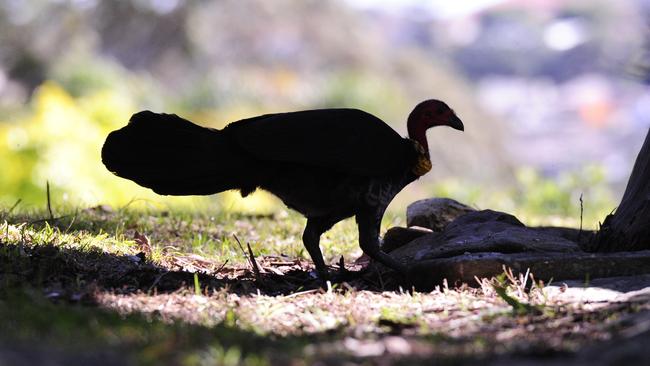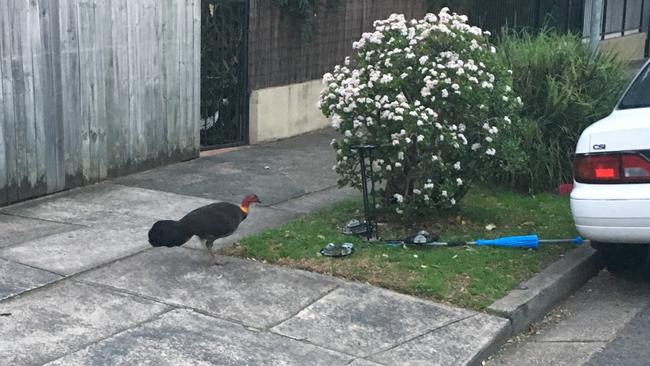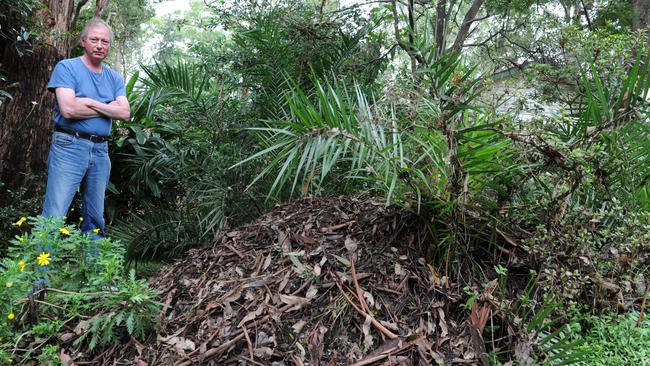Brush turkeys are on the march colonising our inner cities
THEY’RE feisty and seemingly fearless. Once only found in the bush, it’s the native Australian animal that’s taking over the city.

IT’S the newest of urban invaders. As Australian cities spread into the country so the creatures of the country are invading the city.
But this is no cane toad or wandering wombat waddling into suburban backyards; it’s the brush turkey and the numbers living in the city are on the rise. Once found only in the suburban fringe now the distinctive large black bird, often mistakenly called a bush turkey, has been spotted just a few kilometres from Sydney’s CBD.
Its latest sighting has been in the Sydney suburb of Summer Hill, just nine kilometres west of the city centre. Others have been spotted in the city’s eastern suburbs and north shore.
Cindy Huang from Summer Hill Village Vets told news.com.au it was the first brush turkey she’d ever seen in the densely populated inner west suburb.

At least the size of the more common ibis, the turkey has been perplexing local as it struts down the area’s busy streets seemingly with little worry about other people or cars.
“People keep coming in and telling us about it. Mostly they say a big bird has woken them up but sometimes they want you to explain to them if it was real or if they were dreaming because they’ve never seen one before,” said Ms Huang.
Brush turkeys have already invaded Brisbane with one report showing numbers had jumped 700 per cent in 20 years. Cropping up in Newcastle they have no spread far into Sydney.
Wildlife behaviourist Dr Ann Goeth is an expert in brush turkeys and their colonisation of the cities.

“They are starting to move from the northern suburbs, such as Neutral Bay, Lane Cove and the area around Taronga Zoo to the south in search of food and new habitat,” she told the Wentworth Courier earlier this year.
Parks with lots of undergrowth and foliage lined gullies were prefect urban habitats for brush turkeys, she said. A reduction in the number of foxes has also removed a predator.
However, the fashion for doing away with wide open lawns in favour of bushy gardens, full of natives, was also helping the turkeys acclimatise to city living.
“People often feed brush turkeys directly or unwittingly by leaving their pets bowl sitting about outside. They are total omnivores and will eat anything,” Dr Goeth said.
One of the bird’s most distinctive behaviours is how it rears its young.
Mother turkeys do not incubate their eggs by sitting on them. Rather, and much to the chagrin of gardeners, male turkeys build huge nest mounds — up to five meters in diameter — from sticks, leaf litters and otherwise healthy flowers and plants.

The female birds then inspect the quality of the mounds to choose who to mate with. Male turkeys may mate with several females, all of whom insert their eggs within his mound.
As the compost heap rots it ferments releasing heat which keeps the eggs warm.
The male birds ensure the mound is kept at the perfect temperature but once the chicks emerge they are left to fend for themselves. The vast majority are picked off by lizards or cats.
But if they make it to adulthood, the stubborn birds find somewhere to live and often stay put.
Professor Darryl Jones, deputy director of the Environmental Futures Research Institute at Griffith University, said the turkeys were “ecosystem engineers”.
“It’s the return of a bird that really is an iconic species,” Prof Jones said.
They rake the ground which promotes seed growth and their they may encourage some of its few predators — such as owls — to become more widespread.
“The fact they wreck gardens is a small price to pay to have these animals back,” he said.
Ms Haung said the suburb’s newest resident was happily hopping from garden to garden.
“People have tried to catch it or call WIRES but it jumps up onto roofs to get away.
“It’s a little bit feisty but it seems healthy so it’s probably stuck in Summer Hill forever now.”




